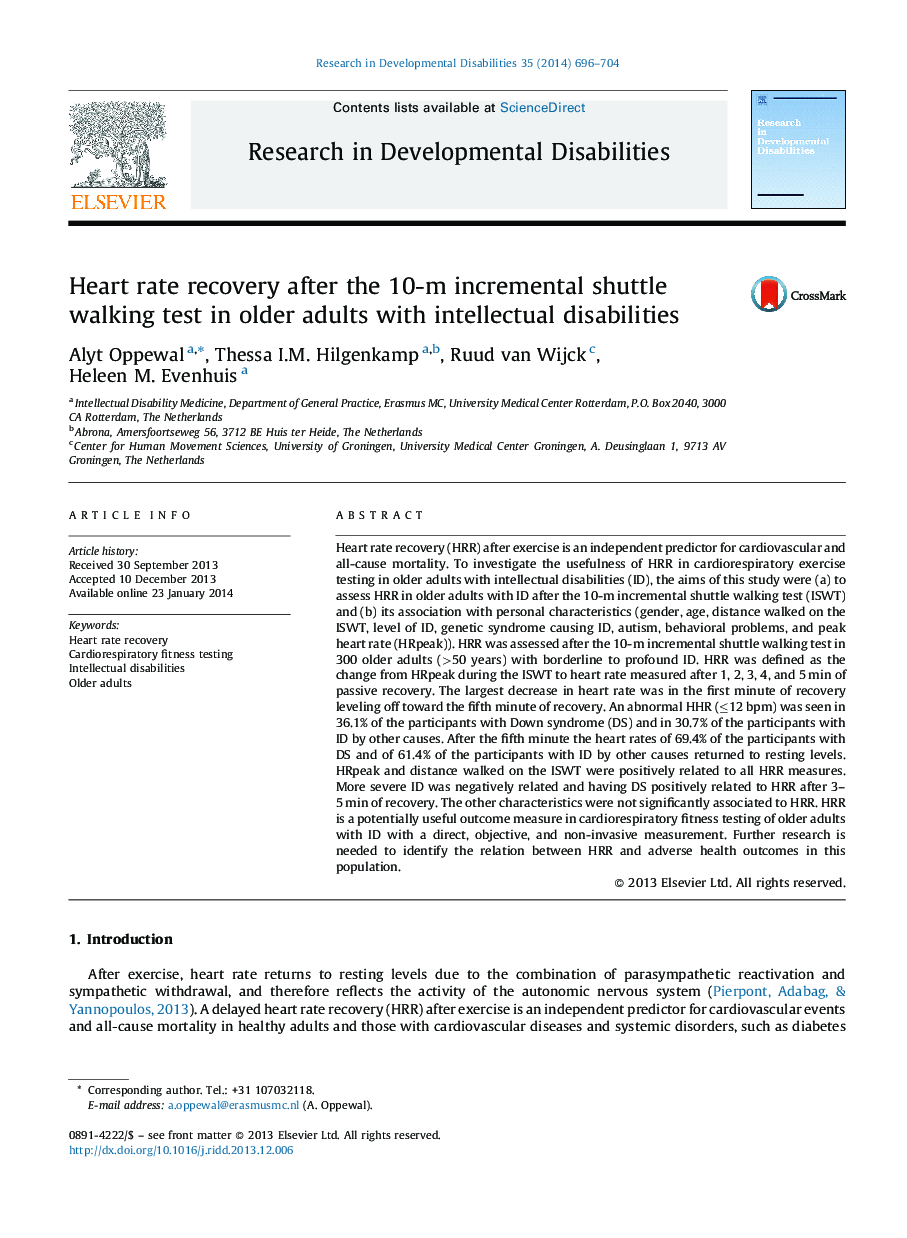| کد مقاله | کد نشریه | سال انتشار | مقاله انگلیسی | نسخه تمام متن |
|---|---|---|---|---|
| 371393 | 621920 | 2014 | 9 صفحه PDF | دانلود رایگان |
• The largest decrease in heart rate was in the first minute of recovery.
• One third of the older adults with ID had an abnormal heart rate recovery.
• Peak heart rate and distance walked were positively related to heart rate recovery.
• A more severe ID was associated with a lower heart rate recovery.
• Having Down syndrome was associated with a higher heart rate recovery.
Heart rate recovery (HRR) after exercise is an independent predictor for cardiovascular and all-cause mortality. To investigate the usefulness of HRR in cardiorespiratory exercise testing in older adults with intellectual disabilities (ID), the aims of this study were (a) to assess HRR in older adults with ID after the 10-m incremental shuttle walking test (ISWT) and (b) its association with personal characteristics (gender, age, distance walked on the ISWT, level of ID, genetic syndrome causing ID, autism, behavioral problems, and peak heart rate (HRpeak)). HRR was assessed after the 10-m incremental shuttle walking test in 300 older adults (>50 years) with borderline to profound ID. HRR was defined as the change from HRpeak during the ISWT to heart rate measured after 1, 2, 3, 4, and 5 min of passive recovery. The largest decrease in heart rate was in the first minute of recovery leveling off toward the fifth minute of recovery. An abnormal HHR (≤12 bpm) was seen in 36.1% of the participants with Down syndrome (DS) and in 30.7% of the participants with ID by other causes. After the fifth minute the heart rates of 69.4% of the participants with DS and of 61.4% of the participants with ID by other causes returned to resting levels. HRpeak and distance walked on the ISWT were positively related to all HRR measures. More severe ID was negatively related and having DS positively related to HRR after 3–5 min of recovery. The other characteristics were not significantly associated to HRR. HRR is a potentially useful outcome measure in cardiorespiratory fitness testing of older adults with ID with a direct, objective, and non-invasive measurement. Further research is needed to identify the relation between HRR and adverse health outcomes in this population.
Journal: Research in Developmental Disabilities - Volume 35, Issue 3, March 2014, Pages 696–704
